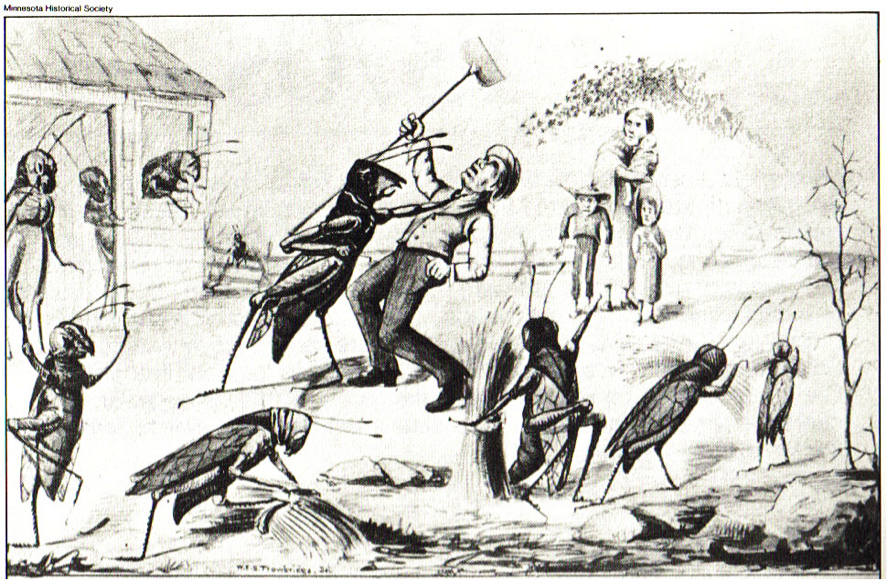(Guest post by Bill Maynard)
In the film A Bug’s Life the heroes are ants while the villains are grasshoppers. The Pharaoh Ramesses II compared Hittite armies to locusts and in an Aesop fable The Ant and the Grasshopper ants worked hard all summer while grasshoppers play, the result being ants survived the winter while the grasshoppers perished. In an Anton Chekov short story, Poprygunya, an unfaithful woman is compared to a grasshopper “hopping from one man to another.”

Under suitable environmental conditions, billions of dense, flightless grasshopper nymphs are called a “plague of locusts”. During the fall of 1875, the largest swarm of locusts on record was the now extinct Rocky Mountain Grasshopper (Melanoplus spretus), the swarm reported as being 1800 miles long and 110 miles wide. In parts of Mexico, grasshoppers, chapulines, are toasted with garlic, lime sauce, salt, and an extract of agave worms and then eaten in tortillas.
So, it wasn’t surprising that 10 of us drove out on a Mile High Bug Club field trip to the western edge of the Great Plains to see what all the fuss over grasshoppers was about. Ages of the participants ranged from an unborn in her third trimester, a 4-month-old, and older kids with adult bodies.

Most participants toted cameras or cell phones for grasshopper imaging and one person, Eric, carried an insect net. We learned grasshoppers, along with katydids and crickets, are in the order Orthoptera. We witnessed firsthand 41 grasshopper species (plus a katydid or long-horned grasshopper) including the lookalike spur-throated grasshoppers with names like Flabellate, Striped Sand, Showy, Thistle, Snakeweed, and Sagebrush, some stridulating (sound produced by rubbing a forewing on the spines of a femur) slant-faced grasshoppers such as Big-headed, Wyoming Toothpick, Velvet-striped, the sometimes large and striking band-winged grasshoppers like Three-banded, Carolina, Blue-legged, Mottled Sand, Pallid-winged, and Red-shanked, plus the very large and flightless Plains Lubber (Brachystola magna). For color brilliance there were multiple Rainbow Grasshoppers (Dactylotum bicolor) its bright coloration an example of “warning coloration”, whereas the Toothed Dune Grasshoppers (Trimerotopis agrestis agrestis) proved a great example of cryptic coloration, blending perfectly with the sand.

We heard the very loud flight sounds (crepitation) and saw the spectacular red wings of the Red-winged Grasshoppers (Arphia pseudonietana) as they rubbed the under surface of their forewings against their wing veins while in flight. In the dry riverbed of Black Squirrel Creek we saw the prehistoric looking Green Fool Grasshopper (Acrolophitus hirtipes) always near broad-leaved plants in the Boraginaceae Family and the spectacular Great Crested Grasshopper, “Dinosaur Grasshopper” (Tropidolophus formosus) whose crepitating flight sound was as distinctive as was its incredible peach-colored hind wings.
While the band-winged grasshoppers flew, other groups showed off their jumping abilities, showing us how they use the muscles surrounding their hind femurs to catapult themselves great distances thus contradicting the muscle principle of not being able to contract with BOTH high force and high velocity. Two-striped Mermiria (Mermiria bivittata) might have jumped the furthest although Ebony Grasshopper (Boopedon nubilum) might have jumped the highest.

A good time was had by all.